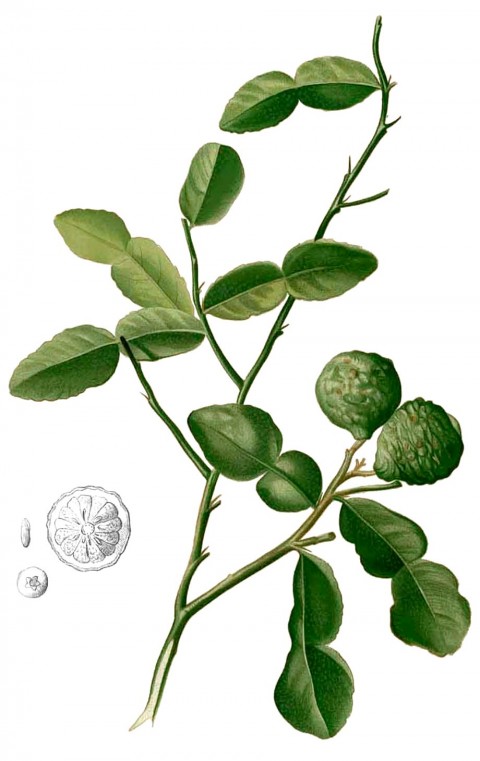Kaffir Lime
Citrus hystrix, commonly known in English as kaffir lime, is a fruit native to Indochinese and Malesian ecoregions in India, Philippines, Indonesia, Malaysia and Thailand, and adjacent countries.
Cuisine
The rind of the kaffir lime is commonly used in Lao and Thai curry paste, adding an aromatic, astringent flavor. The zest of the fruit is used in creole cuisine and to impart flavor to “arranged” rums in the Martinique, Réunion island and Madagascar. However, it is the hourglass-shaped leaves (comprising the leaf blade plus a flattened, leaf-like leaf-stalk or petiole) that are used most often in cooking. They can be used fresh or dried, and can be stored frozen. The leaves are widely used in Thai and Lao cuisine (for dishes such as tom yum), and Cambodian cuisine (for the base paste “Krueng”). The leaves are also used in Indonesian cuisine (especially Balinese cuisine and Javanese cuisine), for foods such as sayur asam, and are used along with Indonesian bay leaf for chicken and fish. They are also found in Malaysian[5] and Burmese cuisines. The juice is generally regarded as too acidic to use in food preparation. In Cambodia, the entire fruit is crystallized/candied for eating
http://en.wikipedia.org/wiki/Kaffir_Lime_Leaves
Lime (from Arabic and French lim)[1] is a term referring to a citrus fruit which is typically round, green to yellow in colour, 3–6 cm in diameter, and containing sour and acidic pulp. Limes are a good source of vitamin C, and are often used to accent the flavours of foods and beverages. They are grown all year round and are usually smaller and less sour than lemons.
http://en.wikipedia.org/wiki/Lime_(fruit)
Foto:
http://commons.wikimedia.org/wiki/File:Citrus_hystrix_Blanco2.408.jpg

